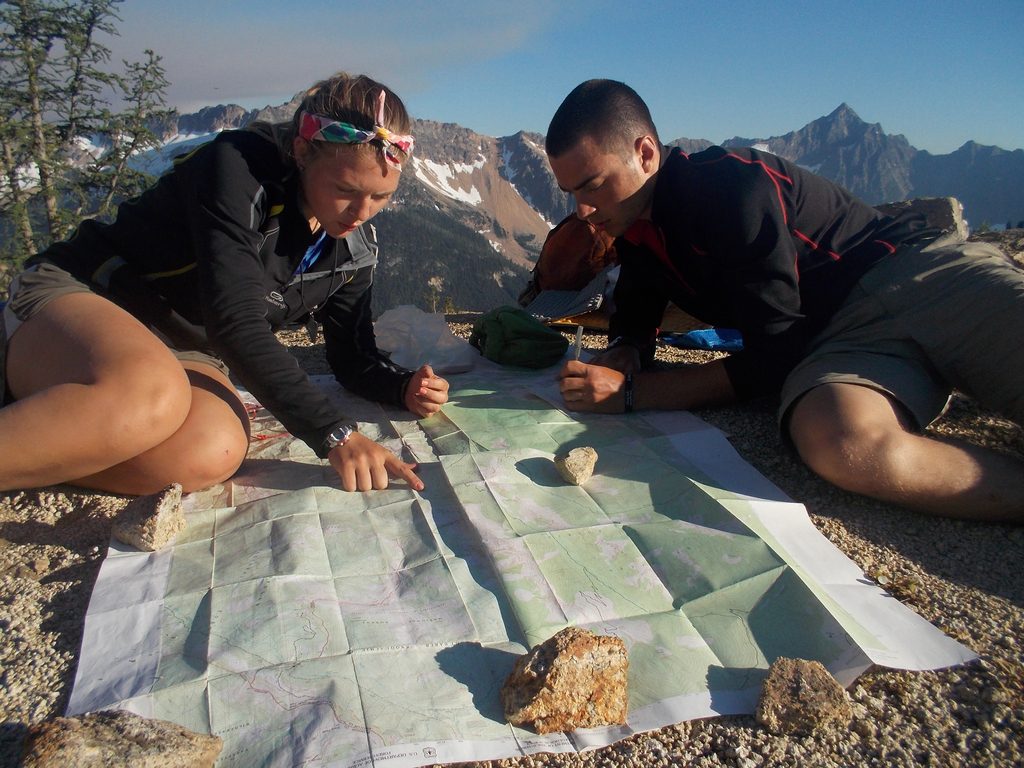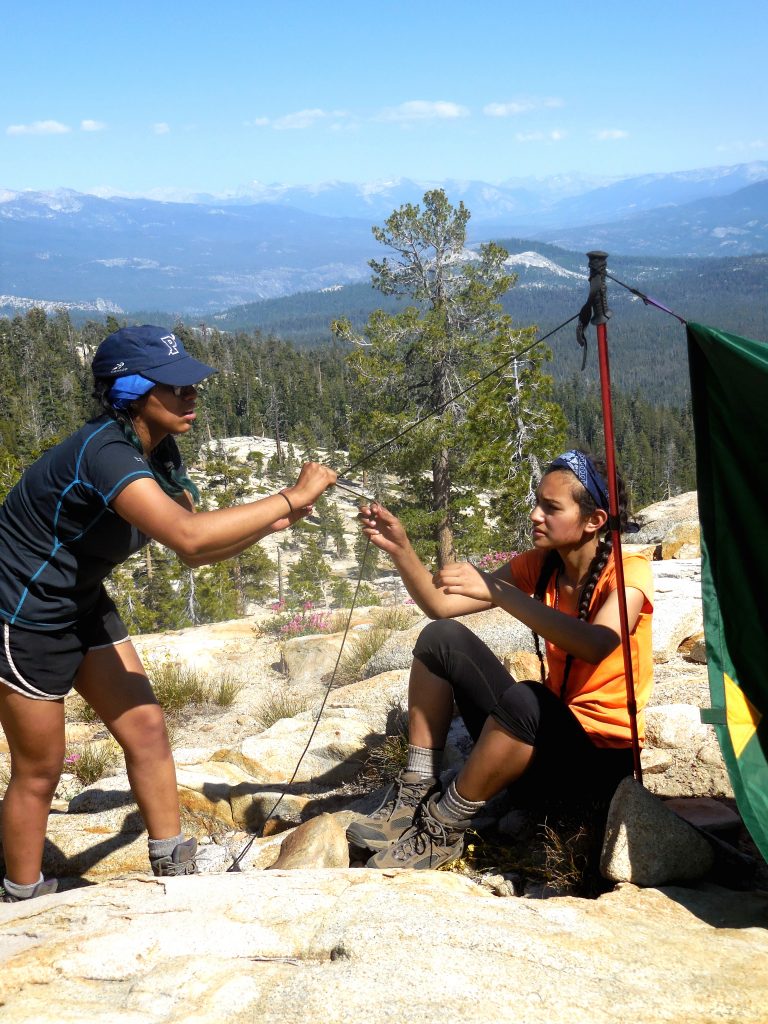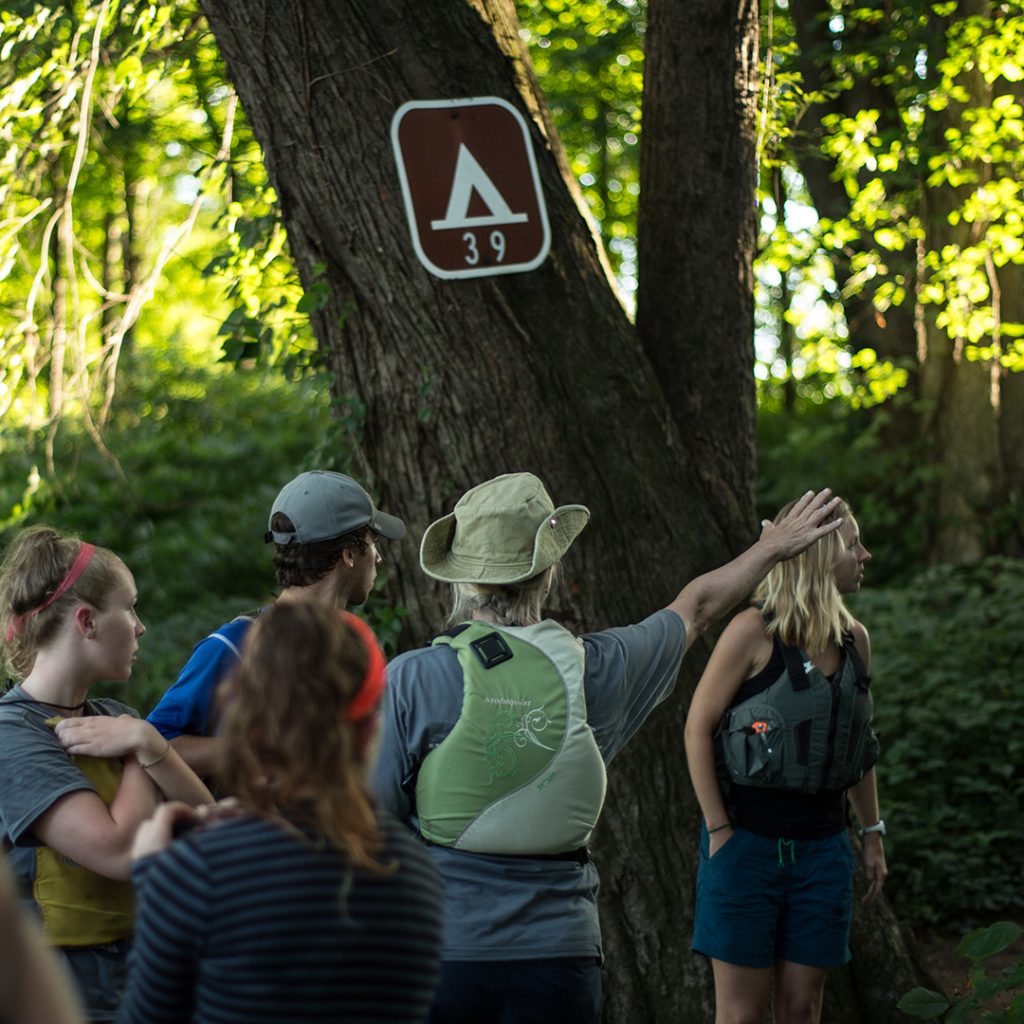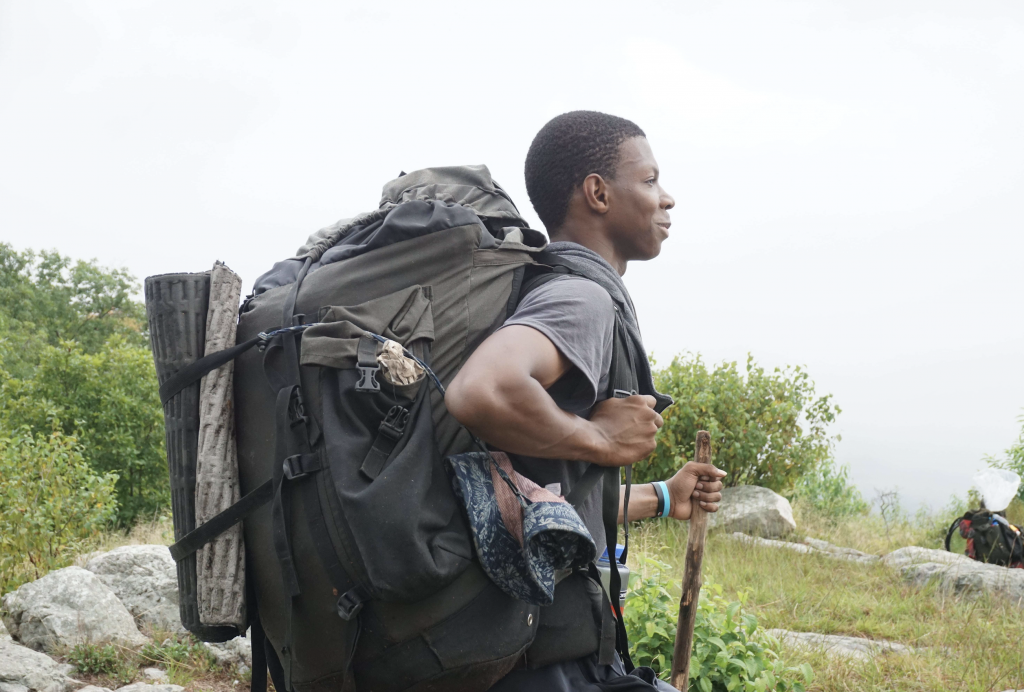I begin every course the same way: with a torrent of words. “This is your backpack. This is how you use it. This is how we eat. This is where you will sleep.” Although my demeanor is not so robotic, the information is still seemingly endless, and the concepts are mostly foreign to my students. It is a necessary evil, explaining everything that needs to be explained, when it needs to be explained, to whom it needs to be explained. Sometimes it is fun, sometimes it is boring, and sometimes it is “Wait…what?” But what may not be obvious in those first days is that this is all part of an important process. And what waits behind these explanations is worth the wait: student leadership.
The Basics: Training Main and Final
Early on in an Outward Bound course your Instructors will gather your crew into a circle and ask you to stand very close to one another. Or perhaps they will challenge you to stand on a tiny box, or request that you write a list of “what responsibilities a baby has.” However they orchestrate it, this moment will be your introduction to your course. This will also be your introduction to the three phases of course: Training, Main and Final, or TMF. The idea behind TMF is to allow for a gradual bestowment of responsibility to students in a structured environment.
First, you learn what you need to do.
Second, you practice what you need to do.
Third, you do what you need to do.
Each phase comes with new levels of freedom and responsibility, allowing for leadership to develop and progress gradually. This structure is what leaves our students feeling so accomplished at the end of a course. It is what empowers our students and gives them the opportunity to feel the weight of being in charge of their crew. It is perhaps what I love most about instructing.
One of the necessities of this structure however is the contrast between the beginning and end. While the beginning of course is often flooded with Instructor voice, the end of course is a space for student voice, where Instructors may take a small step back or become almost entirely silent.

The Finesse
Instructors add, subtract and modify lessons daily, to promote the right amount of freedom and responsibility for every student. This flexibility is essential to the success of TMF because it allows the course to fit the students’ needs. Each crew of students presents a unique set of assets and challenges that cannot be predicted before the course begins, so it’s up to the Instructors to shift their lessons to fit the group’s needs. I recently instructed a course where our plan for the students was to teach them how to canoe 20 miles independently by the end of course. But within one day of actually meeting our students, this plan changed. One of our students was afraid of water, four were terrified of spiders, and half were closer to 4 than 5 feet tall. So we re-structured our days to include lower mileage, and focused on student leadership through education and campcraft instead of physical fitness. By the end of course, our crew independently taught lessons to each other, set up and broke down camp, and navigated through the wilderness independently. They achieved great leadership ability through TMF but not in the way we had originally planned.

This flexibility allows us to ask questions, like “Did I speak too much?”, “Are they ready for this responsibility?”, or “Do you think I should leave a note under a rock for them to find?” And whether or not they find the note that you left under that rock, students feel your voice slipping away and theirs getting louder. They hear themselves using words they never used before in sentences they have never said. And without them even realizing what has happened, their Instructors are sitting by the fire filling out paperwork while they’re running the entire show.
The Mistakes
It is difficult to discuss giving students responsibility without digging into my own mistakes as an educator. Because sometimes, we do it wrong. Letting go is a hard skill to craft. And, my own experiences teaching student leadership have been some of the most rewarding memories of my life, while also exposing some of my most unconscious deficits. I have given too much help. I have given too much freedom. I have misread my students’ needs. It is okay to get it wrong. It is okay to take a step back and reconsider your actions. One of our greatest tools as educators is modeling skills with our own behavior. In that light, modeling what a strong leader does when they have made a mistake is just as valuable a lesson as doing something right the first time.

When we model positive leadership skills, coping mechanisms, and communication, it empowers our students to take a more active role in their own learning. They can see first hand, in their educators, behaviors that they admire or dislike and consider how they can work on themselves to either adopt or avoid those observed behaviors. Then, with a model like TMF, students get to test out their theories on positive leadership. Maybe they dislike the way their Instructor delegates tasks, but appreciate their listening skills. Once Main and Final roll around it is on them to make sure everything gets done properly, and test out their own style of delegation and listening. Unlike a more traditional model of education where students are often in the position of being explained to, the explaining on an Outward Bound course, typically ends by day two. The rest is observing, testing, failing and trying again. Thus, as Instructors, it is in our benefit to fail, openly and honesty, with as much grace as possible. Because, ideally, our mistakes will spark understanding in a nearby student, who will become a newly formed leader.
The Outcome
The last day of course always looks different. Some last days are rushed. Some are smooth. Some are full of tears, while others are full of laughter. Some find you surfing on top of your upside down canoes, waiting for a van to take you home. Every course is a journey of understanding, and no matter the final outcome, there is always incredible growth from start to finish. Whether it is the ability to tie a new knot, or the ability to show more empathy to another student’s circumstances, something always evolves. This is what gradual release of responsibility looks like in practice. Just like the expedition itself, student leadership will show you incredible natural beauty and strength. Allowing students freedom and responsibility gives space for them to show their power, and sometimes see it in themselves for the first time. And the sooner they see their power, the longer they have to know it.

Photo by Kenja Griffin
About the Author
Rebecca Fenn is an outdoor educator, originally from California, who instructs for NYC Outward Bound Schools and North Carolina Outward Bound School. After graduating from University of Chicago with a major in Human Development, Rebecca worked in college admissions and then began her journey toward outdoor education. She became the Life After Eagle Rock Fellow at Eagle Rock School and Professional Development Center, a wilderness-based boarding school in Estes Park, Colorado. There she taught at-risk students “Math for Life” and served as both a college counselor and as a vocational counselor to prepare them for life after Eagle Rock. Upon receiving a Master’s Degree in Education Policy from Harvard, she decided to delve deeper into the Expeditionary Learning model by taking on the challenge of becoming a Field Instructor for Outward Bound. Rebecca is a cartoonist, artist and writer, and loves the challenges and rewards of working with youth in the outdoors. She is always interested in learning more about educational systems, cultures and practices in the United States.




